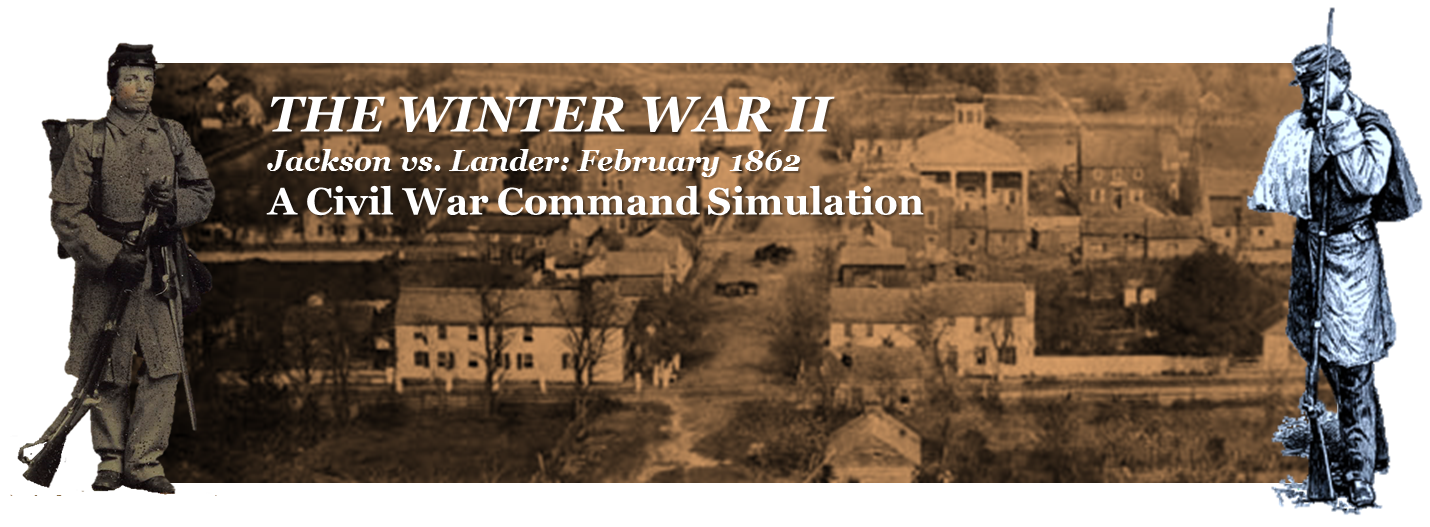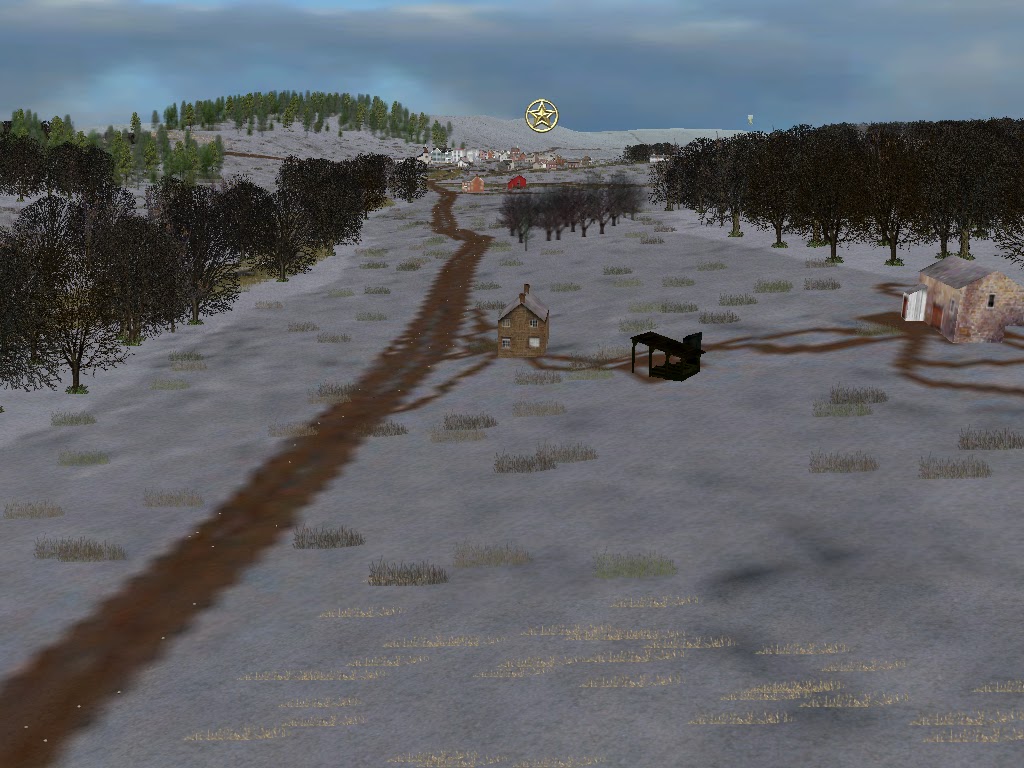Jackson had amassed the Valley District on a campaign against Bath, Hancock and Romney in January 1862. His report seemed to indicate that he may have had greater objectives that he had not made public that he was unable to attain due to low morale. Perhaps he had hoped to take Cumberland and/or the New Creek Depot. His report (excerpts from the official records in the previous post) focused primarily on the tactical level of his attacks and his command challenges with his subordinates. We know that the militia under Brigadier General Carson (and Meem) moved up the west side of Warm Spring Mountain, but we have few details of their advance from Jackson. Likewise, we know that Jackson was not happy that Colonel Gilham and his brigade we unable to engage and defeat the enemy in strength as they took the Sir Johns Run Depot, but Jackson admits that he has no information on why this happened.
The Federals deployed at Bath were a significantly smaller size, less than a regiment in strength when Jackson began to approach the town. Although re-enforced by the 84th Pennsylvania and 13th Indiana, it was primarily a fight by several companies of the 39th Illinois and a handful of cavalry. The 84th had just been issued weapons which had been packed in tallow and were not in effective firing condition, causing Colonel Murray to order a retreat back to Hancock. The 13th Indiana arrived by train from Cumberland, but too late. The got back on the train and returned without engaging. Company commanders from the 39th Illinois, however, leaves some beautiful accounts of the skirmish.
The Federals were aware that the enemy was coming. There were just not sure when, where and how many. The report below by Capt. Linton of Company D of the 39th Illinois (found in the Official Records of the War of the Rebellion, Volume V), provides an excellent account of the process of sending out scouts. Capt. Linton is ordered to split up his men and go find the enemy. They eventually come upon some mounted enemy, the van guard of the approaching enemy. Linton's men fire on the enemy, who retire out of range without firing back, but then fire three signal shots, presumably to signal the main column of the enemy presence.
This is a small squad action. Groups of 5 to 10 men playing an important roll in starting (or avoiding) an engagement. Once the enemy is located, a few cavalrymen show up in support with the major commanding the battalion as the squads investigate the situation.
Eventually, they run into the main body of the enemy, with some horsemen on each flank. The enemy opens fire, and what do Linton's men do: immediately take cover. We often think of engagements early in the war as stand-up fights of men in line. The small band of Federals claims to have placed enough fire on the enemy to drive them back into some woods. Linton's men then start working their way towards a better position behind a fence on the summit of a hill, where "the enemy's balls rattled against it (the fence) like hail." By keeping up fire as they moved, the Federals were able to keep the enemy pinned in the woods while taking a strong position.
A Sergeant Snowden (yes, a Sergeant mentioned by name in the OR!) and his men came across a concealed enemy battalion to their rear. The enemy opened up on them and Snowden's men escaped by falling flat on the ground. The few cavalrymen around, however, fled - which was also noted in Jackson's report. Snowden and his men became surrounded and passed close to the enemy at night, being mistaken for Confederates. A Lieutenant and his men weren't as fortunate and exchanged fire with another body of Confederates in the dark on (night of January 3rd 1862). They were sure that they had inflicted heavy loss on the enemy, but as Jackson's report recounts - they clearly had not. Linton reports losing 8 men as prisoners, confirmed in Jackson's report.
At the close of his report, Capt. Linton mentions a Clark Spinnings, who was too sick to be moved and join the retreat. He later learned that the Confederates had taken excellent care of the man. It is a wonderful testimony of care by the enemy, followed by a heart-felt plea for assistance in having prisoners exchanged and comrades re-united.
Captain James Hooker of Company E of the 39th Illinois reports on a later stage of the action around Bath in which he and his company were involved. He speaks of the arrival and departure of the 13th Indiana. His company was at Sir Johns Run and when he saw the main force falling back he asked what the orders were; "they replied a retreat" and the 84th PA kept right on going to Hancock!
Hooker relates movement back and forth and temporarily moving up an hill, which apparently stopped the Confederate advance (which would probably have been Gilham's Brigade). As with Capt. Linton's action, Capt. Hooker oversaw a small action that, at least by his account, had a significant impact on Jackson's plans. Of course though, Jackson was anxious to get the Valley District moving towards Hancock, so they may have been forced to keep moving onward.
Eventually, the enemy pressed on to Sir Johns Run and Capt. Hooker was among the last to cross the Potomac to the Maryland side. When they reached the opposite bank, they found that the rest of their regiment had left for Maryland. Capt. Hooker, however, decided that his orders were to guard the railroad and depot and that he would continue to do so (from the other side of the river).
The next morning, one of the guards along the river reported to Hooker that then enemy on the other side was breaking up the ice. When Hooker went, he discovered that they were not breaking the ice, but were destroying the railroad track. Capt. Hooker's men then fired from the opposite bank and broke up the Confederate's work, eventually taking position in rifle pits.


















































